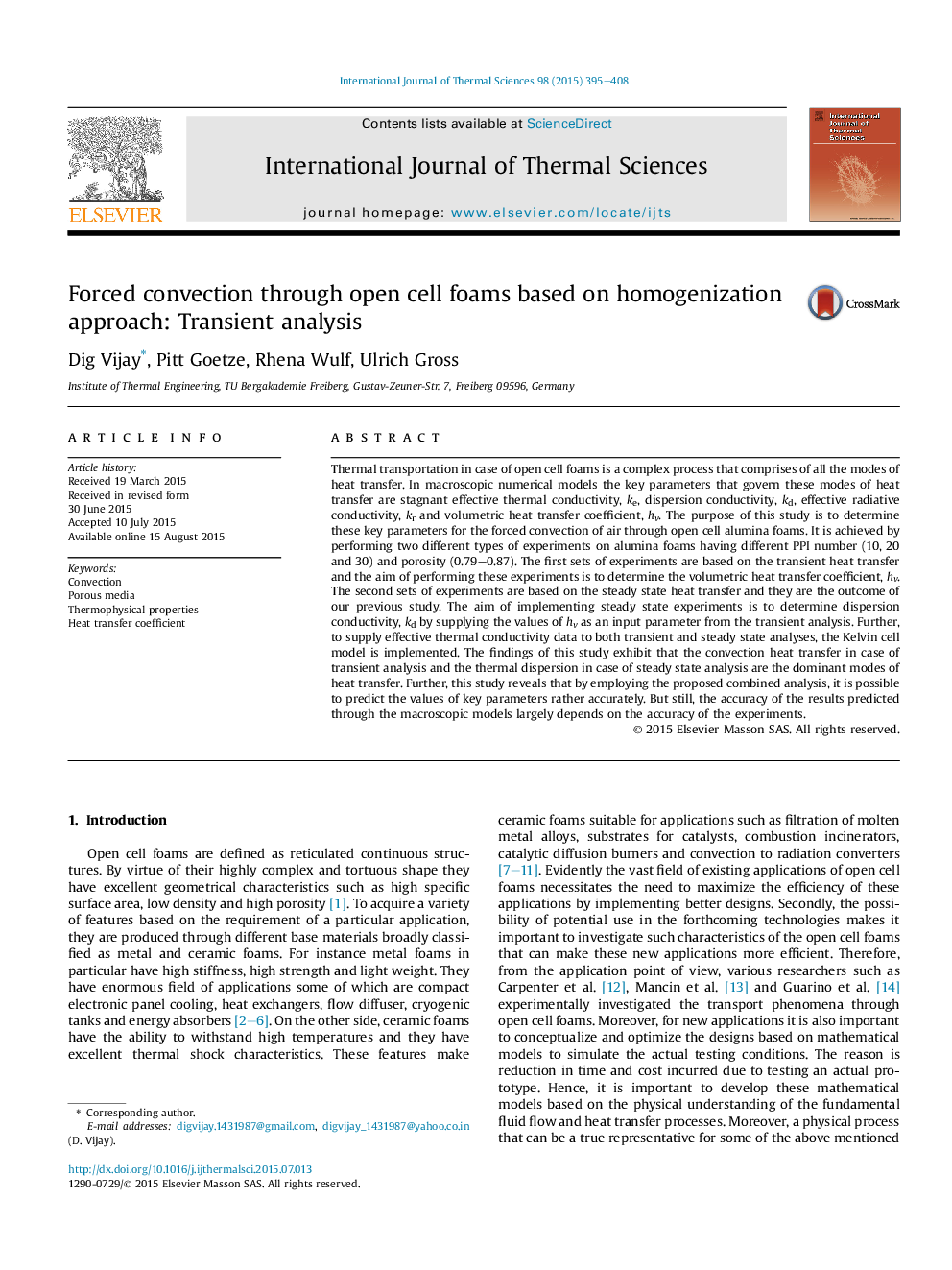| Article ID | Journal | Published Year | Pages | File Type |
|---|---|---|---|---|
| 668005 | International Journal of Thermal Sciences | 2015 | 14 Pages |
Abstract
Thermal transportation in case of open cell foams is a complex process that comprises of all the modes of heat transfer. In macroscopic numerical models the key parameters that govern these modes of heat transfer are stagnant effective thermal conductivity, ke, dispersion conductivity, kd, effective radiative conductivity, kr and volumetric heat transfer coefficient, hv. The purpose of this study is to determine these key parameters for the forced convection of air through open cell alumina foams. It is achieved by performing two different types of experiments on alumina foams having different PPI number (10, 20 and 30) and porosity (0.79-0.87). The first sets of experiments are based on the transient heat transfer and the aim of performing these experiments is to determine the volumetric heat transfer coefficient, hv. The second sets of experiments are based on the steady state heat transfer and they are the outcome of our previous study. The aim of implementing steady state experiments is to determine dispersion conductivity, kd by supplying the values of hv as an input parameter from the transient analysis. Further, to supply effective thermal conductivity data to both transient and steady state analyses, the Kelvin cell model is implemented. The findings of this study exhibit that the convection heat transfer in case of transient analysis and the thermal dispersion in case of steady state analysis are the dominant modes of heat transfer. Further, this study reveals that by employing the proposed combined analysis, it is possible to predict the values of key parameters rather accurately. But still, the accuracy of the results predicted through the macroscopic models largely depends on the accuracy of the experiments.
Related Topics
Physical Sciences and Engineering
Chemical Engineering
Fluid Flow and Transfer Processes
Authors
Dig Vijay, Pitt Goetze, Rhena Wulf, Ulrich Gross,
